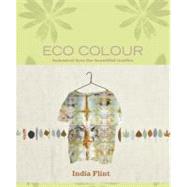
| Prologue | |
| What this book is for | |
| Before You Begin | |
| Natural Dyes - a context | |
| Discovering dyes | |
| Dyeing and cooking: some links | |
| The true cost of synthetic dyes | |
| Regionalism | |
| A renewable color palette | |
| Collecting Plants - a protocol | |
| Backyards and gardens | |
| What's in a name? | |
| Garbage and windfalls | |
| The Workspace | |
| Equipment and a place to work | |
| Equipment | |
| Storing samples | |
| On the Road | |
| Harvesting and storing plants for dyeing | |
| Safe practices | |
| Natural Dyestuffs | |
| Some traditional dye materials | |
| The edible dye garden | |
| Preparing, Processing and Applying Dyes | |
| Preparing to dye | |
| Treating the fiber before dyeing | |
| Animal Fibers | |
| Plant fibers | |
| Mordants | |
| Wool | |
| Cotton | |
| Silk | |
| Looking for alternatives | |
| Tannin | |
| Protein | |
| Alkalis | |
| Acids | |
| Metals | |
| Method of mordant assessment | |
| Pre-mordants | |
| Processing plant dyes | |
| Dye application processes | |
| Some curiosities to be derived from sequential extractions | |
| Some Special Dyeplant Groups | |
| Eucalyptus dyes | |
| Beyond the eucalyptus | |
| Ice-flower dyes | |
| Process | |
| Variations | |
| Plants to try | |
| Fruits and berries | |
| Special Effects | |
| Cold-bundled eco-prints | |
| Fixing the color | |
| What next? | |
| Non-eucalyptus eco-prints using hot-bundling | |
| Hapa-zome - beating color into cloth | |
| Dyeing wool yarn and silver | |
| Basic procedure | |
| Dyeing multicolored yarns and silver in a microwave oven | |
| Multicolored yarns using scrap metals and plant dyes | |
| Multicolored yarns | |
| Printing with plant dyes | |
| Using shibori techniques and layered dyeing | |
| Hexagonal or honeycomb patterns | |
| Tartan patterns | |
| Checkerboard patterns | |
| Multicolored fabrics | |
| Resists | |
| Block printing | |
| Batik - wax resist | |
| Egg | |
| Solar Dyeing | |
| Process | |
| Mud and cow patties | |
| Mud | |
| Cow patties | |
| Some Other Considerations | |
| The importance of water | |
| The importance of time | |
| Caring for cloth | |
| Silk | |
| Wool | |
| Cotton, linen, ramie and hemp | |
| Disposal of wastes | |
| Liquids | |
| Vegetable matter | |
| References | |
| Further reading | |
| Websites | |
| Index | |
| About the Author | |
| Acknowledgements | |
| Table of Contents provided by Publisher. All Rights Reserved. |
The New copy of this book will include any supplemental materials advertised. Please check the title of the book to determine if it should include any access cards, study guides, lab manuals, CDs, etc.
The Used, Rental and eBook copies of this book are not guaranteed to include any supplemental materials. Typically, only the book itself is included. This is true even if the title states it includes any access cards, study guides, lab manuals, CDs, etc.